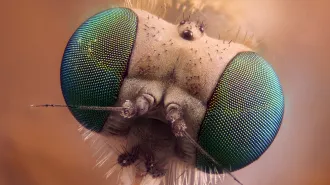Tracking diseases from anthrax to cholera
Whole-genome sequencing points to microbial killers
- More than 2 years ago
FLAGSTAFF, Ariz. — When U.S. Army microbiologist Bruce Ivins committed suicide in 2008, knowing he was the lead suspect in the government’s investigation into the 2001 anthrax letter attacks, the massive scientific push to identify the killer also halted. But had anthrax-laden missives appeared in the mailboxes of journalists and members of Congress today rather than 10 years ago, modern science could have greatly simplified the hunt, says Paul Keim, a microbiologist at Northern Arizona University.
Scientists’ ability to track deadly pathogens got an unexpected and enormous boost from the race to sequence the human DNA blueprint, or genome. Technologies developed at great expense for human sequencing can now spell out a bacterium’s entire genome for as little as $10 a pop, Keim said at a meeting of the Council for the Advancement of Science Writing.
That, in turn, allows scientists to routinely run DNA checks on all sorts of microbes spreading deadly diseases. “Genomes are information, and when we do a forensic or epidemiological investigation we really need information we can depend upon,” Keim said.
In 2001, federal agents called Keim because his laboratory contained the largest collection of anthrax strains from around the world. By comparing the strain used in the anthrax mailings with the Arizona stockpile, officials hoped to pinpoint where the killer might have gotten his bacteria.
Indeed, a raft of analyses traced the mailed anthrax first to a widely used research strain known as Ames, and then to a particular flask of Ames held in Ivins’ laboratory at Fort Detrick, Md. “The evidence is very strong that these spores in the letters came from” that flask, Keim says.
Several reports over the years have questioned Ivins’ link to the anthrax killings. Most recently, a paper to be published in the Journal of Bioterrorism and Biodefense revives earlier arguments that the presence of tin in the spores in the anthrax letters has yet to be explained. (Other scientists say that such contaminants are not unusual.) A National Research Council report released this February also found that “it is not possible to reach a definitive conclusion about the origins of the anthrax in letters mailed to New York City and Washington, D.C., based solely on the available scientific evidence.”
But research into the spores stopped at Ivins’ suicide. Had he not died, Keim says, the government would have likely invoked whole-genome sequencing as it prepared its case to go to trial. “The standards for closing a case are different than the standards for convicting somebody,” he says.
So the spigot of federal money to find the anthrax killer shut off, but forensic microbiologists kept moving forward in other probes. Today, information gleaned from sequencing entire genomes “can be used in ways to understand outbreaks and disease occurrences that is just amazing,” Keim says.
Beginning in late 2009, for instance, heroin users in Glasgow and across the United Kingdom began coming down with anthrax. U.K. officials turned to Keim’s lab for help in pinpointing the source of the bacteria. One earlier outbreak in Scotland had traced to drum hides imported from Ghana. And some wondered whether the new cases could be linked to 1950s-era government biological weapons testing on the Scottish island of Gruinard.
Comparing the strain found in the heroin users to the Arizona anthrax library revealed that it was very similar, if not identical, to two kinds naturally found in Turkey. To Keim, that similarity suggests the heroin was accidentally contaminated as it was smuggled overland from its source in Afghanistan.
Whole-genome sequencing is also proving its forensic mettle in broader disease outbreaks. More than 6,000 Haitians died in 2010 during an outbreak of cholera, which some suspected had been carried to the country by Nepalese peacekeepers working for the United nations. Keim and his colleagues found that the Haitian strain matched a strain that had been circulating in Nepal just before the peacekeepers were deployed.
“Does this mean the cholera in Haiti came from Nepal?” Keim asks. “Maybe. Cholera gets around very fast.”
Knowing where the cholera may have come from obviously doesn’t help the thousands of Haitians who died. But Keim hopes that more attention will be paid to health conditions in countries before deploying peacekeepers, and also to keep sanitary conditions once they arrive.
Government disease detectives, like those at the Centers for Disease Control and Prevention in Atlanta, don’t routinely use whole-genome sequencing yet in their hunt for microbial killers, Keim says. But over the next five to 10 years, “this technology will move into the mainstream,” he says. “It is a game-changer.”
A game-changer that came too late for an iron-clad case in the anthrax mailings, but maybe not to catch the next mass killer.







